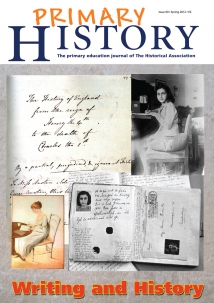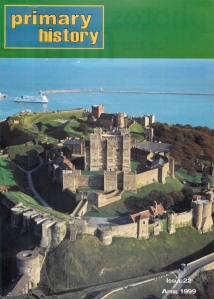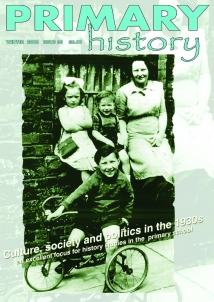Historical sources
1. Literacy/English

- Hilary Robinson, “Writing books for young children about the First World War” PH 79, summer 2018.
Also:
- David Wray and Maureen Lewis, “Bringing Literacy and History Closer Together”, PH 20, October 1998. Largely based on Exeter Extending Literacy Initiative.
- Jon Nichol, “Difficult and Challenging Reading: Genre, Text and Multi-Modal Sources – Textbreaker” PH 56, autumn 2010.
- Pat Hoodless, “Planning links with Literacy” PH 57, spring 2011
- John Fines, “Children writing history” PH 60, spring 2012.
- Sarah Codrington, “Children writing history: Nuffield Primary History Project Exemplar lessons” PH 60, spring 2012.
- Nuffield Primary History Project, “Writing and History Overview” PH 60, spring 2012. Includes case study of evacuees.
- Nuffield Primary History Project, “Children writing history: the writing spectrum – from historical accounts to poetic writing and historical fiction” PH 60, spring 2012. Includes case study on Scott and Amundsen.
- Nuffield Primary History Project, “Writing generator” PH 60, spring 2012. Covers different modes, audiences. Case study on the body in the bog.
- Nuffield Primary History Project, “Writing: demonstration and modelling” PH 60, spring 2012. Case study of Archimedes and Syracuse.
- Nuffield Primary History Project, “Historical accounts: Reports and recounts” PH 60, spring 2012. Case study of evacuees and Fulwell windmill.
- Nuffield Primary History Project, “Poetic writing” PH 60, spring 2012. Includes case study of Saxon poem.
- Nuffield Primary History Project, “Mini scaffolds: charts, concept webs, diagrams, mini-frames, grids and tables” PH 60, spring 2012. Includes case study of Florence Nightingale.
- Nuffield Primary History Project, “Reading into writing” PH 60, spring 2012. Case study of Saxon poetry.
- Nuffield Primary History Project, “Oracy and writing: speaking, listening, discussion and debate” PH 60, spring 2012. Case study on Grace Darling and the Victorian workhouse.
- Nuffield Primary History Project, “History and language” PH 60, spring 2012.
- Nuffield Primary History Project, “History and language” PH 64, summer 2013.
2. Mathematics/Numeracy

Also:
- Colin Miller, “Pythagoras and Number” PH 20, October 1998.
- Colin Miller, “Mathematics from History”, PH 21, January 1999. Linking history and maths.
- Colin Miller, “The Magic of Mathematics”. PH 22, April 1999. Linking history and maths.
3. Art, Music, PE:
Also:
- Sue Temple, “Justifying the Links: Art and History”, PH 49, summer 2008.
- Hilary Cooper, “What are the reasons for linking Art and History?” PH 49, summer 2008.
- Natalie Gomez, “Inspiring artwork: using the paintings in the Kenwood Collection to develop creative writing skills nd introduce children to a historic house” PH 61, summer 2012.
- Rosie Turner Bisset, “Music in the History Curriculum”, (In my View), PH 44, autumn 2006.
- Alison Webb, “Music and History combine at Key Stage 2”, PH 53, autumn 2009.
- Justine Reilly and Brian Heywood, “Celebrate your sporting heritage on National Sporting Heritage Day” PH 74, autumn 2016
4. Citizenship/PHSE/Values:

- Bee Rowlatt and Kirsty Ruthven, ‘Significant people: Why it's worth considering Mary Wollstonecraft’, PH 94, summer 2023
Also:
- Anthony Panter and Ian Cawood, “Identifying the Potential of History in Teaching Citizenship at KS1 and 2”, PH 33, winter 2002.
- Peter Vass, “Stories about People: Narrative, Imagined Biography and Citizenship in the Key Stage 2 Curriculum”, PH 41, autumn 2005.
- Hilary Claire, “Learning and Teaching about Citizenship through History in the Primary Years”, PH Leading Primary History: Support Materials for History Co-ordinators”, 2005. Very useful, detailed and comprehensive.
- Hilary Cooper, “History, values education and PHSE” (In My View), PH 50, autumn 2008.
- Mike Mitchell, “Citizenship and the Olympics” PH 58, summer 2011

